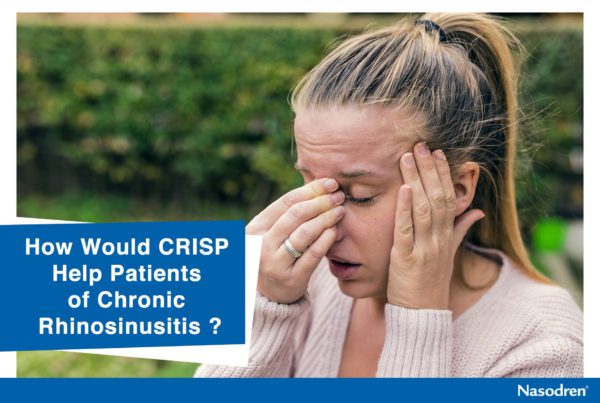Drug-induced rhinitis. New possibilities of conservative therapy.
Key messages from this study
- Nasal obstruction is a very common symptom that many patients try to solve using decongestants (vasopressors).
- Rhinitis medicamentosa (RM) is one of the serious problems of rhinology and accounts for 12,5% of the diseases of the nose and paranasal sinuses. Clinical manifestations are nasal congestion, nasal breathing difficulties and psychological dependence of the drug.
The main cause of RM is the use of decongestants; using vasopressors for more than 5-7 days develops rebound syndrome. - The performed study shows the effectiveness of Sinuforte in the treatment of RM in patients applying decongestants for up to 12 months that gives a reason to recommend this product as the drug of choice for the treatment of this group of patients.
- When patients are aware of side effects that Sinuforte®/Nasodren® may produce because of its mechanism of action (burning sensation, itching, sneezing etc.), most of them tolerate and complete treatment course, which reinforce the importance of training pharmacists, and ENTs if called, in an appropriate and continued way.
Study Design: Simple open study
Objective: Evaluate the efficacy, safety and tolerability of Sinuforte (Nasodren®) in patients with rhinitis medicamentosa (RM).
In addition, the study also included the analysis of long-term efficacy (after 45 and 72 days of treatment ending) of a 15-day course application of Sinuforte® (Nasodren®).
Patients: 40 patients aged from 15 to 60 years with rhinological symptomatology of at least 10 points.
Study method: The functional characteristics of the nasal cavity were evaluated by rhinomanometry (assess respiratory function) and saccharin test (measures transport function of ciliated epithelium).
Training the patients to properly use the drug was a mandatory element of the study. Importantly, the study doctor explained to the patients that undesirable effects (burning sensation, sneezing, watery eyes…) are characteristic of the mechanism of action of Sinuforte and should not be feared.
RESULTS
Efficacy
The analysis of the impact of Sinuforte® on the difficulty of nasal breathing has shown with a decrease in the score of the symptom after the treatment.
The evaluation of disorders of smell is quite interesting. If before the treatment 10 patients reported reduction of smell, at the end of the treatment all 34 patients evaluated their olfactory function from 0 to 4 points (0-10 points scale, being 0 perfect smell and 10 no smell at all).
Out of the 18 patients having used vasopressors from 1 to 6 months, 14 people abandoned them accounting for 77%. Seven of the eight patients (87.5%) having used decongestants from 6 to 12 months also stopped using them. Among the four patients having used vasopressors from 12 to 36 months only one stopped using them. Four patients who had experience of applying decongestants for more than 36 months continued using them even during the treatment with Sinuforte (concomitant use may explain the lack of efficacy in the patient who dropped out).
After the treatment of RM with Sinuforte® all the studied functional indicators have improved significantly.
Long-term results (assessed after 45 and 72 days):
93% of the patients who had been using decongestants for up to 6 months reported a lack of dependence on them.
86% of the patients who had been using decongestants for up to 12 months reported a lack of dependence on them.
The only patient who had an “experience” of up to 36 months also noticed a lack of dependence.
Safety:
It should be noted that despite the existence of undesirable effects from the nasal cavity and the lacrimal passages, only six patients withdrew from the study (3 of them due to reasons not related with the product). The remaining 34 patients took the study in accordance with the protocol.
V.S. Kozlov, N.G. Chuchueva.
Vestn Otolaryngology. 2012; (6): 71 –75







